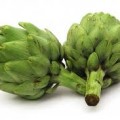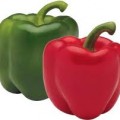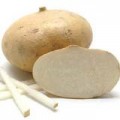[Intro text]
Botanical Information
Taxonomy
Monarda didyma
Several plants of the Monarda genus are also known as bergamot, although they are not to be confused with the classical Bergamot (of Earl Gray Tea fame) which is a citrus.
History
Physical Description
Plant grows to be 2-4 feet tall, growing like a bush or shrub, but with individual stalks coming up from a common root. It spreads rapidly, so allow 2 feet spacing. Flowers are uniquely-shaped composite flowers, each with a deep throat full of nectar for hummingbirds, butterflies, and insects. The flowers come in white, pink, or purple, but the typical bee balm is red. It flowers in summer.
Varieties & Cultivars
Categories or Types of [plantname]
Colors Available
Varieties (link to ../category/cultivars/tag/[plantname])
Growth Requirements
Climate & Temperature Requirements
Air Temperature
Soil Temperature
Humidity
Day Length or Light Requirements
Bee balm thrives in a variety of light conditions, but prefers a sunny location
Soil Requirements
Not too picky, but prefers rich, moist soil
Soil Texture
pH
Nutrient Requirements
Propagation
Methods of propagation
Seed
Division
Cuttings
Transplanting or Potting Up
Seed Saving
Planting Out
Bed Prep & Soil Amendments
Bed Spacing
Plant or thin volunteer seedlings to 2 feet, since it spreads rapidly.
Planting Depth
Alternative Bed Methods
Container Gardening
Routine Cultivation & Maintenance
Water Requirements
Fertilization Recommendations
Mulching & Weeding
Pinching or Pruning
Dead-heading (removing spent flowers) extends bee balm’s flowering period.
Support
Winterizing
Companion Planting
Helpful Companions
Harmful Companions
Companion to..
Pests, Diseases & Problems
Common Pests
Common Diseases
Symptoms
Whole Plant
Leaves
Stem/Trunk
Flowers
Fruit
Roots
Harvesting & Storage
Edible Parts of the Plant
- Flowers: Bee balm flowers have a citrus, minty flavor
Yield
Days to Harvest / Harvest Timing
Flowers are present all summer long
Harvest Methods
- Harvest bee balm flowers in the morning, after the dew has dried, but before the day starts heating up
- Choose flowers at their peak for best flavor
- Snip the flower heads off the plant, leaving enough stem to store in a vase, if not using right away
Storage of harvest
Fresh
- if not using right away, store them in a vase with water (don’t pluck the petals till ready to use them) and store in a cool place.
Canned
Frozen
Pickled
Dried
- separate petals from pistil & stamens
- lay out in a single layer, not touching, on paper towels
- once dry, label and store in an air-tight container in a cool, dark place
Cooking
Nutritional Benefits & Values
Toxicity
Cooking
Preparation
- Gently wash or dust the flowers to remove insects, soil and dust
- Snip the flower head off the plant
- Pluck the individual flowers off the composite flower head, leaving the pistil & stamens on the head
Cooking Methods
Recipes
- Tea
- 2 T chopped fresh flowers (or 1 T dried)
- 4 C water
- steep 5-10 minutes
- strain
- serve
- Salads: sprinkle petals on green salads for a citrus-minty effect
- Garnish: beverages, plates, appetizers, dips
Resources
Information for this article was taken from these sources. (link to …/category/resources/tag/[plantname])




